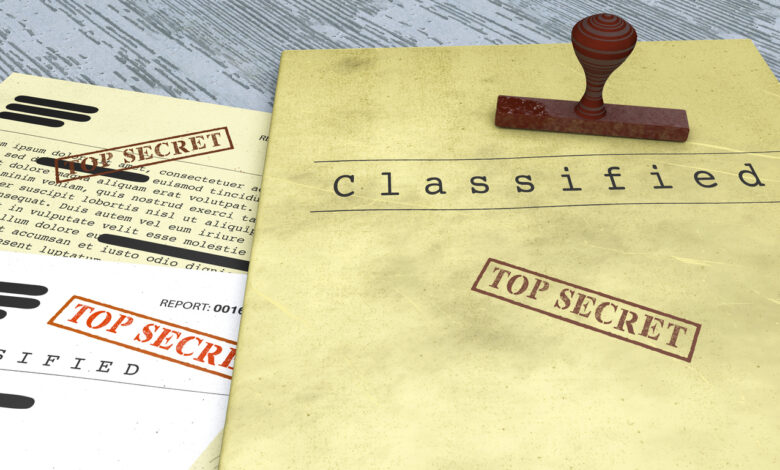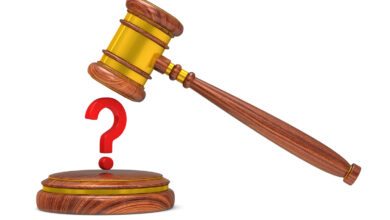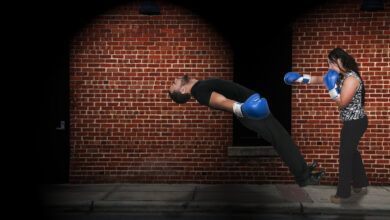One Cut at a Time: Judge Cannon is Trying to Kill The Trump Documents Case

FOR THE SECOND TIME IN LESS THAN A WEEK, Judge Aileen Cannon on Monday issued an order in Donald Trump’s classified documents case that on its face decided nothing, but nevertheless sent an unmistakable signal to Trump that she will be there when he needs her.
It is normal in criminal proceedings for judges to request that both the prosecution and the defense propose instructions to be delivered to the jury at or near the end of the trial, but Judge Cannon’s order Monday evening requiring the parties to submit proposed jury instructions in this case is anything but normal. Judge Cannon not only ordered the parties to submit proposed instructions, she told them that one of them should provide that Trump, and Trump alone, had the legal right to declare any and all of the documents he took from the White House as “personal” records. Like her ruling last week putting off a decision on Trump’s motion to dismiss the charges against him under the Espionage Act, her order Monday evening didn’t decide the issue; it merely kicked it down the road. And like last week’s order, Monday’s order was ambiguous enough to allow her plausibly to deny being in the bag for Trump—she presented the “Trump had the right to do it” proposed instruction as only one of two “competing scenarios” she will entertain later in the case.
The other “competing scenario,” by the way, is almost as bad. It would require the jurors to examine each classified document in order to make a factual determination on whether it is “personal” or presidential. This option would create a hellish dilemma for Special Counsel Jack Smith’s prosecution team: Either allow the un-cleared jurors to see highly classified information that could harm national security or prevent the prosecution from introducing damning documentary evidence against Trump.
Judge Cannon is looking more like Trump’s last and perhaps only line of defense in the case. Without her thumb on the scale, Smith has Trump dead to rights. But the powers of a federal judge are potent enough to ensure that the case, no matter how strong and important to the national welfare and security, will suffer a slow death.
THE KEY FACTS OF THE CASE are damning and are not seriously in dispute. Smith’s detailed 60-page indictment contains enough specific, factual allegations—including direct quotations, documentary evidence, and photographs—to leave little doubt that he can prove his case:
- Trump took hundreds of classified documents out of the White House and stored them in unsecure locations—a ballroom, a bathroom, a storage room, a bedroom and an office—all over his Mar-a-Lago property in Palm Beach, Florida, “an active social club which, between January 2021 and August 2022, hosted events for tens of thousands of members and guests.”
- The documents included, among other things, information “regarding defense weapons capabilities of both the United States and foreign countries; United States nuclear programs; potential vulnerabilities of the United States and its allies to military attack; and plans for possible retaliation in response to a foreign attack.”
- On at least two occasions, Trump showed some of the classified documents to others who didn’t have security clearances.
- When Trump received a grand jury subpoena requiring him to turn over all of the documents with classification markings, he obstructed justice by suggesting that his attorney lie to the FBI and the grand jury about the documents, directed an employee to move boxes of documents to conceal them from the government and his own attorneys, suggested that his attorney hide or destroy documents, caused a false sworn certification to be submitted representing that he had returned all of the requested documents when he knew that he hadn’t, and attempted to delete security camera footage from Mar-a-Lago in order to conceal information from the government.
Trump’s “defenses” to these allegations aren’t serious, but even if they were, they would be at best only partial defenses, insufficient to get him off the hook:
- Trump’s preposterously overblown claim of presidential immunity, even taken at face value, would still cover only actions he took during his presidency. But most of the acts alleged in the indictment took place after he left office. For instance, the time frame of the conspiracy to obstruct justice charge and several of the other charges in the indictment doesn’t even begin until May 11, 2022, more than a year after Trump left office.
- Trump’s claim that the PRA permitted him to take and retain government records, including documents bearing the highest classification markings and containing the most sensitive national defense information, is, in the overly generous words of one commentator, “nowhere near the target.” The truth is exactly the opposite of what Trump claims: The PRA makes it clear that official documents belong to the government, not the outgoing president. Nevertheless, even if Trump’s claim were valid, while it might impact how some jurors might feel about Trump having removed official documents from the White House in the first place, it still would have absolutely no bearing on at least eight other counts charging Trump for obstructing justice, making false and misleading representations, corruptly concealing documents, and unlawfully disclosing national defense information.
- Trump’s claim that he casually declassified hundreds of documents just by taking them from the White House or by silently waving some kind of invisible magic wand over them is ludicrous on its face, but even if the documents had been magically “declassified,” it wouldn’t really matter. Technically classified or not, the documents still contained information “relating to the national defense,” and were therefore subject to the restrictions of the Espionage Act. Moreover, the magical declassification defense has absolutely no bearing on the charges involving Trump’s obstruction of the grand jury subpoena. The subpoena called for Trump to turn over all documents “bearing classification markings,” not “classified” documents. Big difference—determining whether a document bears a classification marking is a binary decision made simply by looking at the document. It either bears such a marking or it doesn’t. Many of the documents Trump took from the White House did.
ABSENT JURY NULLIFICATION—not an impossibility, but something that occurs so rarely that it’s almost unthinkable to stake your freedom on it—how does Trump get himself out of this?
Enter Judge Cannon.
Her recent orders on the Espionage Act and jury instructions weren’t the first and won’t be the last blows to the prosecution. If she isn’t removed from the case, sooner or later she is going to inflict enough wounds to kill it.
But removing Cannon from the case will be no easy task.
The standard for recusal of a federal district judge requires a showing of actual bias or prejudice, or that the judge’s impartiality might reasonably be questioned. As broad as those standards may appear on first blush, “decades of case law have narrowed the applicability of the statutes significantly by determining what types of interactions with parties are evidence of bias or would create perceptions of bias.” Neither appointment by a president nor ideological affiliation is likely to meet the standard in a case involving a president.
So, is there enough here?
Unclear. There is no doubt that the record in this case is rapidly piling up with examples of Judge Cannon issuing highly questionable orders, all of which favor Trump:
- Shortly after being assigned to the case, Cannon issued an order directing the appointment of a special master to conduct a painstaking review of the documents Trump took from the White House and barring the government from using any of the seized documents pending the completion of the special master’s review, a process that could have taken months. Smith appealed Cannon’s order and the Eleventh Circuit promptly reversed it, finding that Cannon lacked jurisdiction to make the order because none of the factors that would permit Cannon issue the order were met. Although delivered in decorous legal-speak, the three-judge circuit panel, which included two Trump appointees, eviscerated Cannon’s decision and reasoning, stating that acceptance of her position would require “a radical reordering of our caselaw . . . [and] would violate bedrock separation-of-powers limitations.”
- Last month Judge Cannon ordered that the identity of government witnesses be publicly revealed, subjecting them to the risks of threats, intimidation, and harassment that are regularly visited on anyone Trump targets as an enemy. Smith’s office has moved for reconsideration in order to “correct clear error and prevent manifest injustice.” Given that Trump and his attorneys already knew the names of all the witnesses, Cannon’s order that the names be made public seems almost designed to provoke second thoughts in the heads of any witness who might otherwise be willing to testify against Trump.
- Judge Cannon’s order last week on Trump’s motion to dismiss the charges against him under the Espionage Act — which has been enforced in criminal proceedings for over a century, as recently as earlier this month — is rife with judicial gibberish suggesting that Judge Cannon may be prepared to ignore precedent, which she pejoratively dismissed as “asserted judicial glosses.”
- Judge Cannon’s order Monday indicates that she is taking Trump’s preposterous PRA “defense” seriously, and might instruct the jury that under the Act, Trump was entitled to deem classified government documents revealing our nation’s defense weapons capabilities, nuclear programs, and vulnerability to military attack as his “personal” records.
- Still pending are motions by Trump to dismiss the entire case on grounds of presidential immunity and, failing that, to delay the trial. It doesn’t take much imagination to guess how those will go.
That’s certainly at least the beginning of a compelling record for removing Judge Cannon from the case. Before Cannon’s two most recent orders, several smart commentators concluded that the record was still too thin to remove her from the case. But with every move she makes for Trump in defiance of reason, justice, and precedent, the argument for reassigning the case grows stronger.
Cannon hasn’t (yet) struck a single fatal blow to the case, such as dismissing it outright, and she’s probably too smart to do so. She undoubtedly knows that dismissing the case on some obviously bogus ground would lead not only to reversal on appeal, but also to her prompt removal from the case.
Instead, Cannon is tormenting the case the way a cat toys with a mouse before finally killing it. She is creeping as close as she can to the outer limits of her discretionary authority, while at the same time being careful to avoid obviously crossing the line. Every step she takes helps Trump—even decisions that appear at first blush to go against him—but each is tempered just enough to avoid piercing her thin veil of deniability.
So waiting for Cannon to make a clear misstep—a ruling so obviously biased and egregious that the Eleventh Circuit will have no choice but to recuse her—will probably prove to be futile.
Jack Smith has a terrible choice to make. Moving against Cannon based on the current record risks failure. Waiting until she makes a single ruling so bad that it virtually requires removal risks waiting until it’s too late.
If Smith believes that Cannon will continue to slowly kill the case, he has to act soon. A recusal motion is not a sure thing by any means, but it may be the only hope his case has of avoiding death by a thousand cuts.




